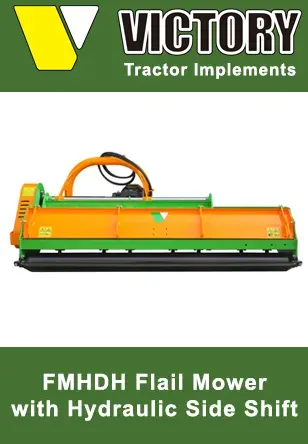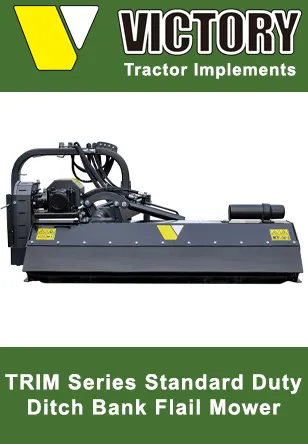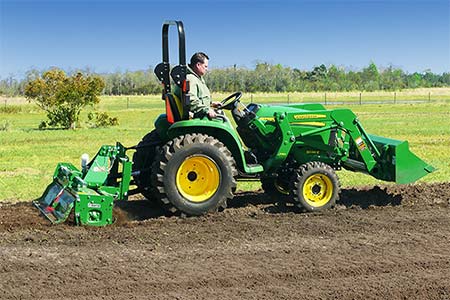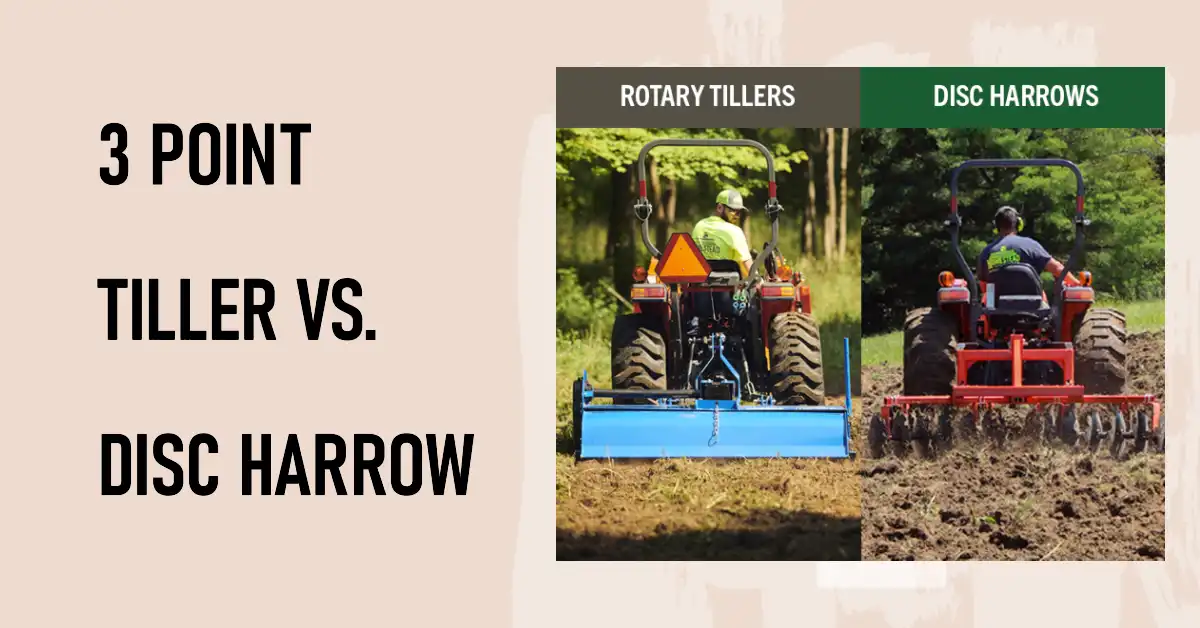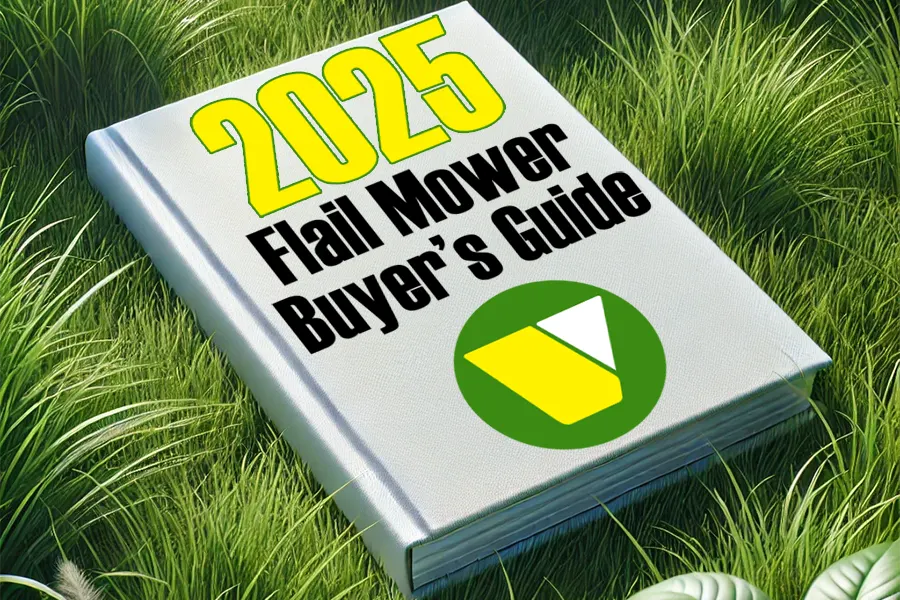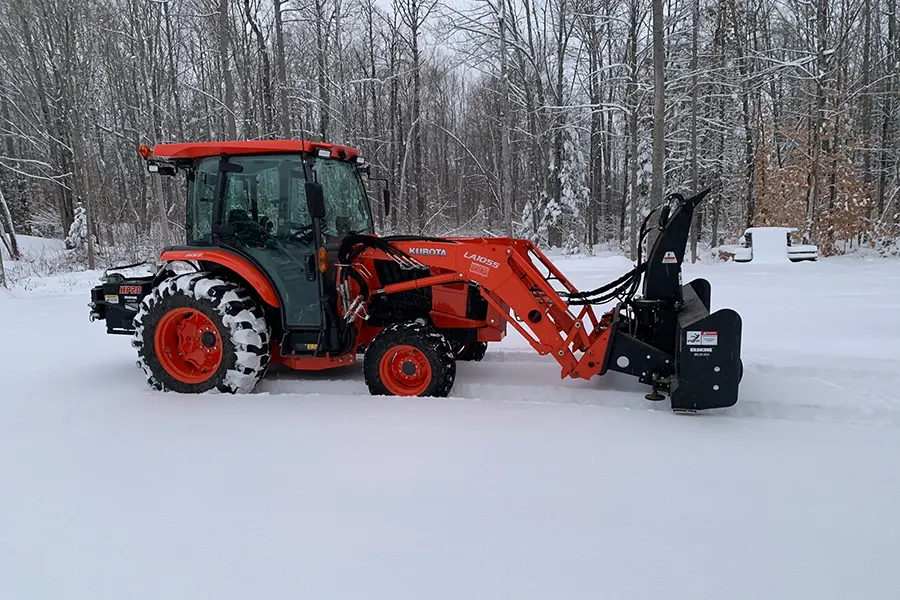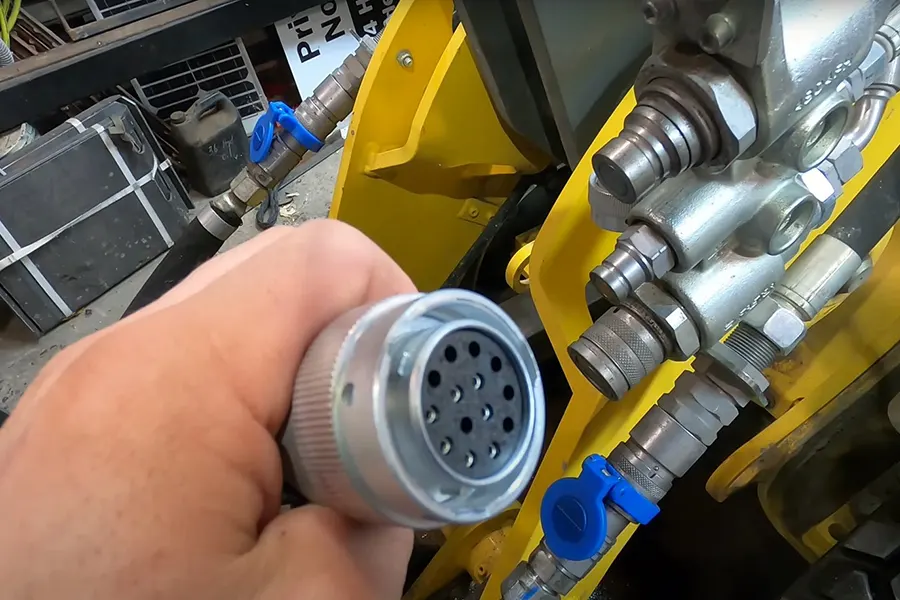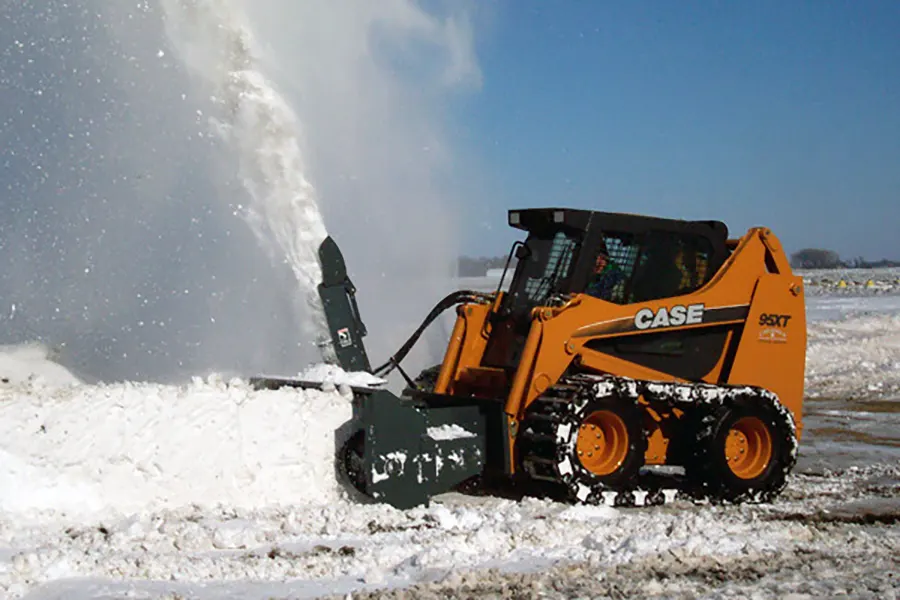Tractors are awesome machines! One great feature that enhances their power is the use of 3-point attachments. These attachments boost tractors’ capabilities and make them able to do various tasks easily and quickly. From plowing fields to lifting heavy items, 3-point attachments give farmers and operators lots of opportunities.
When it comes to agricultural work, speed is essential. With 3-point attachments, tractors can go from one implement (like plows, tillers, and mowers) to another without delays. This means that farmers can finish tasks faster and more effectively, leading to greater productivity.
Not only do 3-point attachments increase efficiency, but they also increase safety on the farm. By connecting implements to the tractor’s rear using a three-point hitch system, operators can drive equipment without fear of detachment or instability. This makes it safer for everyone.
A study by the Agricultural Safety and Health Program at Michigan State University found that tractors with 3-point attachments had much fewer accidents than those without them. The study showed that using 3-point attachments decreased the chance of equipment-related incidents by up to 50%.
Understanding 3-Point Attachments
Tractor attachments can boost your tractor’s capabilities and versatility. 3-point attachments are essential tools for performing different tasks. These connect to the tractor’s 3-point hitch, providing stability and transferring power from the tractor to the attachment.
Check out this table of 3-point attachments and their functions:
| Attachment | Function | Examples |
|---|---|---|
| Plow | Digging furrows or snow removal | Moldboard plow, Subsoil plow |
| Mower | Cutting grass or vegetation | Rotary mower, Flail mower |
| Seeder/Planter | Planting seeds in rows or furrows | Precision seeder, Grain drill |
| Tiller | Breaking up soil for planting or aerating | Rotary tiller, Disc harrow |
| Backhoe | Digging trenches or moving materials from the ground | Tractor-mounted backhoe, Excavator attachment |
Also, there are specialist attachments based on your needs, such as boom sprayers for applying pesticides or fertilizers, hay balers for harvesting hay, and post hole diggers for creating fence posts.
So, to maximize your tractor with 3-point attachments:
- Figure out what you need: Choose attachments that suit the tasks you need to do.
- Keep it maintained: Check and clean your attachments for optimal performance and longevity. Lubricate moving parts when needed.
- Safety first: Follow safety guidelines from the tractor and attachment manufacturers. Keep away from rotating parts.
- Weight limits: Consider your tractor’s weight limits when selecting an attachment. Don’t overload the tractor.
- Read the manual: Know the attachment’s manual for its usage, maintenance, and operational precautions.
By being aware of each attachment’s use and following the tips above, you can make the most of your tractor and use it safely.
Benefits of Using 3-Point Attachments
To maximize your tractor’s potential with 3-point attachments, explore the benefits they offer. Increased versatility, efficiency and time-saving, and cost-effectiveness are the solutions to enhance your tractor’s capabilities. These advantages will ultimately provide you with a more productive and cost-efficient farming experience.
Increased Versatility
3-point attachments bring increased versatility to jobs. They enable quick mounting and dismounting, allowing users to switch between implements easily and perform multiple tasks. This saves time and effort, and increases productivity.
Not only that, but 3-point attachments also provide stability. Their design ensures better weight distribution, giving operators more control and reducing the risk of tipping over – particularly when working on uneven or hilly terrain.
Let me tell you an interesting tale of 3-point attachments in action. John had a small tractor, but needed to do many jobs on his farm. With the attachments, he could switch between a mower, cultivator, and loader quickly. This saved him money and space in his shed. Thanks to the increased versatility, John’s farm was more efficient and productive.
In conclusion, 3-point attachments offer great benefits. Time-saving convenience and enhanced efficiency are just some of the advantages they bring to any task. They can perform multiple tasks and provide added stability, making them a valuable asset for any operator seeking optimal performance.
Efficiency and Time-Saving
3-point attachments offer great efficiency and time-saving benefits. Quick attachment, precise control, multi-functionality and ergonomic design are some of the main advantages. Plus, compatibility with tractors helps ensure optimal power distribution.
To maximize these benefits, regular maintenance and operator training is recommended. This keeps everything running smoothly and prevents errors or mishaps during operation. Get the most out of 3-point attachments and experience improved operational efficiency, time savings, and increased productivity.
Cost-Effectiveness
3-point attachments are cost-effective. They boost efficiency and productivity in various uses, saving costs. Let us explore how.
In agriculture, 3-point attachments are great. With one machine, farmers can do many tasks – tilling, mowing, and carrying heavy loads. This cuts down the need for different equipment and lowers maintenance costs. And, it lets farmers use their investment to the fullest, adding to cost-effectiveness.
In construction, 3-point attachments save money. Contractors can carry out diverse functions with one vehicle, without extra specialized tools. No matter if it’s digging or moving materials, 3-point attachments help maximize efficiency and cut expenses.
Customizability of 3-point attachments is also useful. Attachments can be changed according to needs, without extensive modifications or extra machines. This saves time and money, while ensuring optimal performance.
Tip: To get the most cost-effectiveness from 3-point attachments, assess your needs and choose attachments that offer versatility for operations. This will help you maximize productivity and lower costs in the long run.
Choosing the Right 3-Point Attachment
To ensure you choose the right 3-point attachment for your tractor, tackle the task by assessing your tractor’s power and capability, considering your specific needs and tasks, and researching and comparing different attachments. By following these steps, you can maximize your tractor’s potential and make an informed decision on the ideal attachment for your requirements.
Assessing Your Tractor’s Power and Capability
When it comes to assessing your tractor’s power and capability, a few factors come into play. Horsepower is important, as it determines the amount of work it can manage. Weight plays a role too, as heavier tractors are more stable and can handle heavier attachments. Additionally, think about the terrain you’ll be working on, as this affects the type of attachment you’ll need.
Let’s look at a table which shows key specs. It includes info about horsepower, weight, and the recommended attachment size for each type of tractor. Understanding these specs helps you pick the best attachment for your needs without overworking the machine.
| Tractor Type | Horsepower | Weight | Attachment Size |
|---|---|---|---|
| Subcompact | 15-25 | 1.5-2k | 48″ |
| Compact | 25-45 | 2-4k | 60″ |
| Utility | 45-75 | 4-8k | 72″ |
| Standard | >75 | >8k | Varies |
Not only should you consider the horsepower and weight range for different tractors, but also the size of the attachment. The correct size ensures optimal performance and prevents any strain on the tractor. It’s wise to talk to experts or check manufacturer guidelines when selecting an attachment.
In the past, farmers had no resources to guide them when choosing attachments. They had to rely on intuition or trial and error, which was time-consuming. Now, technology and research have made it easier. Manufacturers have created standardized guidelines to help farmers make informed decisions.
Considering Your Specific Needs and Tasks
Evaluating Your Needs & Responsibilities:
When choosing the perfect 3-point attachment for your tasks, there are several things to consider. These include:
- Type of equipment you are using
- Specific tasks you need to complete
- Features and attachments that can increase efficiency
By analyzing your unique needs and responsibilities, you can make a wise decision and choose the best attachment for your tasks.
| Factors to Consider | Explanation |
| Equipment Type | Different equipment types might need different attachments due to compatibility, weight capacity, and working mechanisms. |
| Task Requirements | What tasks will you be doing? Clearing land, digging trenches, moving materials? Different tasks require different attachments to maximize productivity. |
| Add-On Features | Some attachments provide features like hydraulic capability or adjustable settings. These can help if they fit your needs. |
In addition to these main points, remember aspects like durability and ease of use. Durability means the attachment can handle hard tasks without getting worn out quickly. Easy attachment and detachment from your equipment also helps with switching between tasks.
Here are some tips when selecting a 3-point attachment:
- Check customer reviews and ratings: Reading feedback from people with similar tasks as yours can give you ideas about which attachments are good.
- Talk to experts: Contact industry pros or equipment dealers who know a lot about attachments. They can give recommendations suited to your needs.
- Look for versatility: Choose attachments that can use different implements and accessories. This gives you more options for tasks.
By following these tips, you can make an informed decision and get the best 3-point attachment for your unique needs and tasks, improving your efficiency and productivity.
Researching and Comparing Different Attachments
Researching and comparing attachments needs a deep understanding of features, specs, and compatibility. By researching and comparing options, a great decision can be made when selecting the perfect 3-point attachment.
When looking into attachments, details which weren’t mentioned before must be taken into account. For instance, certain attachments have adjustable heights or swappable components which can boost their performance.
The global market for agricultural equipment attachments is estimated to reach $22 billion by 2025. This shows the growing demand for these attachments and highlights the importance of choosing the right one for superior performance.
Proper Installation and Setup
To maximize your tractor’s potential in proper installation and setup, ensure compatibility with your tractor, size and adjust the attachment, and follow safety guidelines.
Ensuring Compatibility with Your Tractor
Your tractor is a precious asset – compatibility is key for correct setup. Keep in mind these points:
- Choose attachments made for your tractor – this will enable optimal performance.
- Check the weight limits of your tractor – this prevents overloading and damage.
- Check power requirements – make sure any extra equipment does not go above the capacity of your tractor.
- Check hydraulic compatibility – mismatched components can lead to leaks.
- Verify mounting options – double-check that the attachment points and mounting brackets align securely.
Also, proper maintenance and inspections ensure compatibility between your tractor and its accessories. Inspect connections, hoses, and fittings often for any signs of damage.
Pro Tip: Refer to the manufacturer’s guidelines and specifications before buying new attachments and equipment for your tractor.
Sizing and Adjusting the Attachment
- Measure: First, measure the area where the attachment will be placed. A ruler or measuring tape is essential to get exact dimensions.
- Adjust: With the measurements obtained, modify or resize components of the attachment for it to fit perfectly.
- Test: After adjustments, test the attachment’s fitting. Place it in its designated spot and analyze if it fits and works as intended. Make corrections quickly if needed.
- Fine-tune: Finally, fine-tune the attachment if required. Check its performance thoroughly and make small changes for the best results.
Note, when sizing and adjusting attachments for installation and setup, precision is vital.
Pro Tip: Take your time with this procedure, because rushing can cause improper fitting, reducing the installation’s effectiveness.
Following Safety Guidelines
Safety is vital for a secure installation. Consider these points:
- Wear safety gear, e.g., gloves and glasses.
- The work area must be lit and clear.
- Read the manual before starting.
- Be careful with sharp and electrical things.
- Disconnect power sources before making adjustments.
Remember to check for any potential hazards, use safe lifting techniques and double-check all connections. Here’s an example of why safety should be taken seriously: In 2015, a technician didn’t wear safety goggles when installing a board. A metal fragment flew into his eye, causing severe injury and temporary loss of vision. So, stay safe!
Maximizing Performance and Potential
To maximize your tractor’s performance and potential, explore the sub-sections in this section. Discover maintenance and care tips, operational techniques for various attachments, and troubleshooting common issues as solutions. Dive into these areas to ensure your tractor operates at its best and achieves optimal results.
Maintenance and Care Tips
It’s easy to ensure your belongings perform at their best and last longer. Here are 3 tips:
- Clean regularly – use the right cleaning methods & products to prevent damage.
- Check for wear & tear – attend to repairs ASAP.
- Store correctly – cool, dry place away from sun & extreme temps.
Plus, follow the care instructions provided by manufacturers.
Follow these maintenance & care tips to get the most out of your belongings. Start now and extend their lifespan!
Operational Techniques for Different Attachments
Different attachments need different techniques to work better and reach their full potential. Let’s explore the operational techniques for different attachments in a professional way.
Troubleshooting Common Issues
Troubleshooting is essential for reaching goals. Here are steps to do it:
- Detect the challenge.
- Examine potential causes.
- Take advice from specialists.
- Follow an ordered system to solve it.
- Check if the solutions work.
- Keep records of the process.
Also, stay up-to-date on industry news and tech to handle new issues. Constant learning and adapting strategies will prevent future problems.
To improve troubleshooting more:
- Create an atmosphere that encourages communication.
- Use automation tools for repetitive tasks.
By doing this, people can address common issues quickly and reach their potential.
Conclusion
It’s clear that 3-point attachments have great potential to boost your tractor’s abilities. With them, you can increase efficiency and accuracy of your operations.
The benefit of 3-point attachments is that they let you easily switch between tools such as plows, mowers, and tillers with no time wasted. This saves resources and shortens the task duration.
They also provide stability for precise control and accuracy. With this level of control, you get better performance and less wastage.
When you invest in compatible attachments, your tractor can do even more. For instance, a front-end loader attachment allows you to move heavier items like soil or equipment. A post-hole digger attachment is perfect for fencing or construction projects.
To maximize your tractor’s 3-point attachments, here are some tips:
- Research to find attachments for your specific needs.
- Maintain and inspect regularly.
- Invest in high-quality attachments.
- Consider compatibility with future tractors.
By following these suggestions, you can make the most of your tractor’s 3-point attachments. You’ll be able to enhance efficiency, productivity, and cost-effectiveness. With the right selection and maintenance, you can achieve great things with your tractor. Start your farming journey now!
Frequently Asked Questions
1. What are 3-point attachments for tractors?
3-point attachments are tools or implements that can be connected to the rear of a tractor using the three-point hitch system. They are specifically designed to enhance the functionality and versatility of tractors by allowing them to perform various tasks.
2. What types of tasks can be accomplished with 3-point attachments?
With the right 3-point attachments, tractors can perform tasks such as plowing, tilling, mowing, landscaping, digging, hauling, lifting heavy objects, and more. There are a wide variety of attachments available, each designed for specific purposes.
3. How does the three-point hitch system work?
The three-point hitch system consists of three points of connection between the tractor and the attachment. Two lower points are located on the rear of the tractor, while the upper point is a movable lifting arm. This system allows for easy attachment and detachment of implements, as well as provides stability and control during operation.
4. Can 3-point attachments be used on all tractors?
No, not all tractors are compatible with 3-point attachments. The tractor must have a three-point hitch system installed to be able to connect and use these attachments. It is important to check the tractor’s specifications or consult the manufacturer to ensure compatibility.
5. Are 3-point attachments easy to install and use?
Yes, 3-point attachments are generally designed to be user-friendly and easy to install. Most attachments come with clear instructions and can be attached or detached using the tractor’s hydraulic system. However, it is always recommended to read the manufacturer’s guidelines and practice proper safety precautions.
6. Where can I find 3-point attachments for my tractor?
You can find 3-point attachments at agricultural equipment dealerships, online marketplaces, and specialized tractor attachment stores. It is advisable to research different options, compare prices, and consider factors like quality, compatibility, and warranty before making a purchase.



